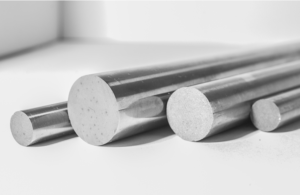Spis treści
Dźwignia kolankowaCarbide Rods
When discussing the tools and materials that make the manufacturing world tick, carbide rods for wear-resistant applications stand out. They are a testament to engineering innovation, designed to withstand the rigors of heavy use and demanding conditions. But what are these rods made of, and what exactly do they offer to businesses and manufacturers? Let’s dive into their properties and various applications to better understand why they are such a valuable resource.
Understanding Carbide Rods
At its core, a carbide rod is a cylindrical piece made predominantly from tungsten carbide, a compound widely celebrated for its hardness and durability. Unlike softer materials, carbide rods are engineered to resist wear, abrasion, and impact, making them pivotal in numerous industries.
For instance, think about drilling operations. In these environments, tools are put through extreme conditions where heat and friction are a constant threat. By employing carbide rods for wear-resistant applications, manufacturers can ensure that their drill bits, for example, retain their sharpness longer, reducing the frequency of replacements and maintenance. This quality not only saves time but also lowers operational costs.
The Benefits of Carbide Rods
1. Exceptional Hardness: Carbide rods have a remarkable hardness level, often exceeding that of steel. This attribute makes them ideal for industries where tools are subjected to harsh wear and tear. For example, in mining, drill bits made from carbide rods can penetrate deep into the earth more effectively than those made from softer metals.
2. Good Toughness: While firmly recognized for their hardness, carbide rods also exhibit good toughness, meaning that they can absorb energy and resist fracturing under stress. This balance of properties ensures that tools achieve longevity with minimal breakage.
3. Corrosion Resistance: Wear-resistant applications frequently involve exposure to chemicals and harsh environments. Carbide rods can withstand corrosion from acids or other hostile substances, making them suitable for use in petrochemical plants or waste processing.
4. Versatility: The adaptability of carbide rods for wear-resistant applications cannot be overstated. They can be manufactured into various shapes and sizes, tailored to meet specific needs. This versatility extends across several sectors, from automotive to aerospace, where components require utmost reliability to prevent failures.
5. Cost-Efficiency Over Time: Though the initial investment in carbide rods might be higher than other materials, their durability translates to long-term savings. Businesses can reduce downtime due to tool replacements and maintenance, allowing for smoother operations.
Applications of Carbide Rods
Various industries utilize carbide rods for their wear-resistant properties. Here are a few specific applications to illustrate their value:
Cutting Tools: In machining, carbide rods are often ground into cutting tools such as end mills and inserts. These tools maintain sharpness longer than those made from high-speed steel, ensuring precision in manufacturing parts like automotive components.
Mining and Drilling: As previously mentioned, carbide rods are integral in drill bits used in mining. They allow for efficient drilling into tough rock formations, leading to quicker extraction processes and improved productivity.
Transportation: In the aerospace sector, components made from carbide rods can reduce the weight of machines while ensuring that they can withstand high-stress conditions. Aircraft engine parts, for instance, can benefit from this material’s unique properties, allowing for enhanced performance and safety.
Agriculture: Farmers often use machinery that relies on wear-resistant blades and components to ensure that equipment is durable and effective. Carbide rods play a crucial role in producing these components, providing the strength needed for plowing, tilling, and other activities.
Things to Consider When Purchasing Carbide Rods
When buying carbide rods for wear-resistant applications, customers should consider a few important factors:
Quality Assurance: Choose suppliers known for consistent quality in their manufacturing processes. Checking for certifications can ensure that companies receive rods that meet industry standards.
Customization: Depending on the specific needs, customers may require customized surfaces or dimensions. A supplier that offers tailored solutions can provide a better fit for the intended application.
Price vs. Performance: While it may be tempting to opt for cheaper alternatives, invest in quality carbide rods that offer reliable performance. Evaluating the total cost of ownership, including longevity and reduced maintenance, can provide a clearer picture of value.
Supplier Reputation: Researching suppliers and their reputations can lead to better purchasing decisions. Reading reviews and case studies can provide insights into how carbide rods have performed in similar wear-resistant applications.
Wniosek
In summary, carbide rods for wear-resistant applications are invaluable assets in various sectors, thanks to their exceptional properties of hardness, toughness, and corrosion resistance. They enhance durability and can lead to significant cost savings, making them a worthy investment for businesses seeking efficiency and reliability.
Understanding how to leverage these materials can empower companies to improve their operations, ensuring that they remain competitive in today’s fast-paced market. As industries continue to evolve, the role of carbide rods in wear-resistant applications only promises to grow, underscoring their significance in modern manufacturing and beyond. When considering tools and resources for tough conditions, carbide rods should undoubtedly make it to the top of the list.
